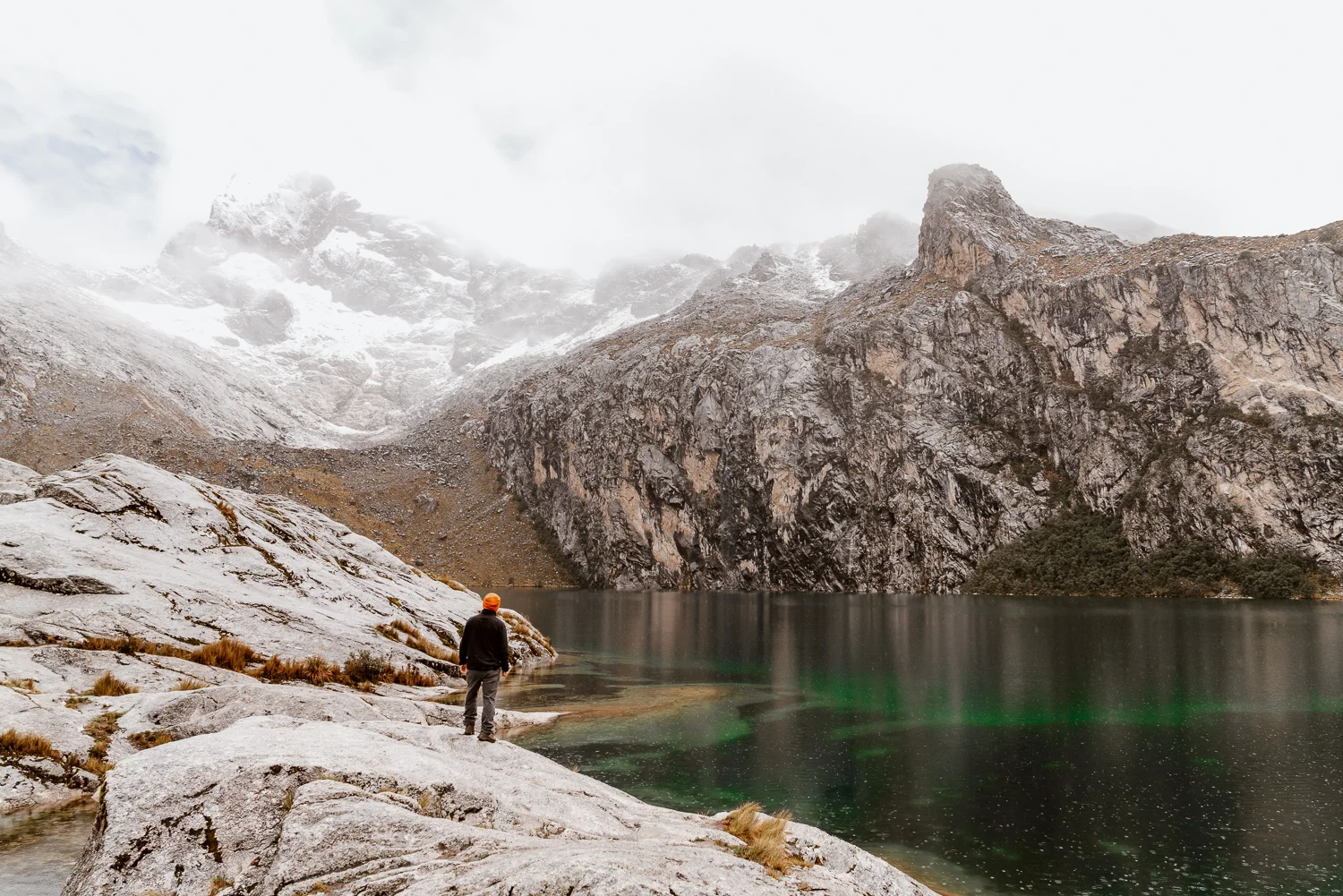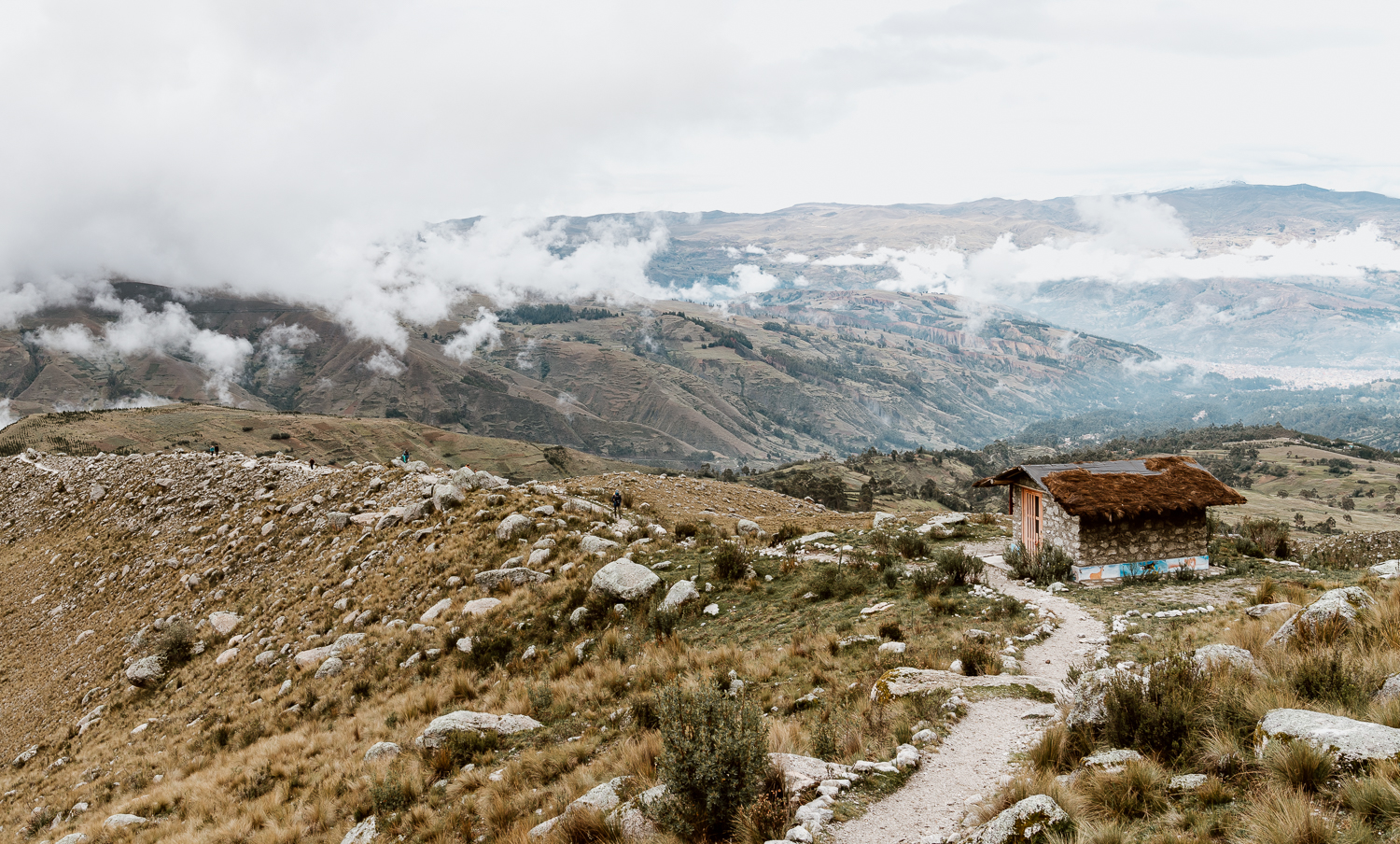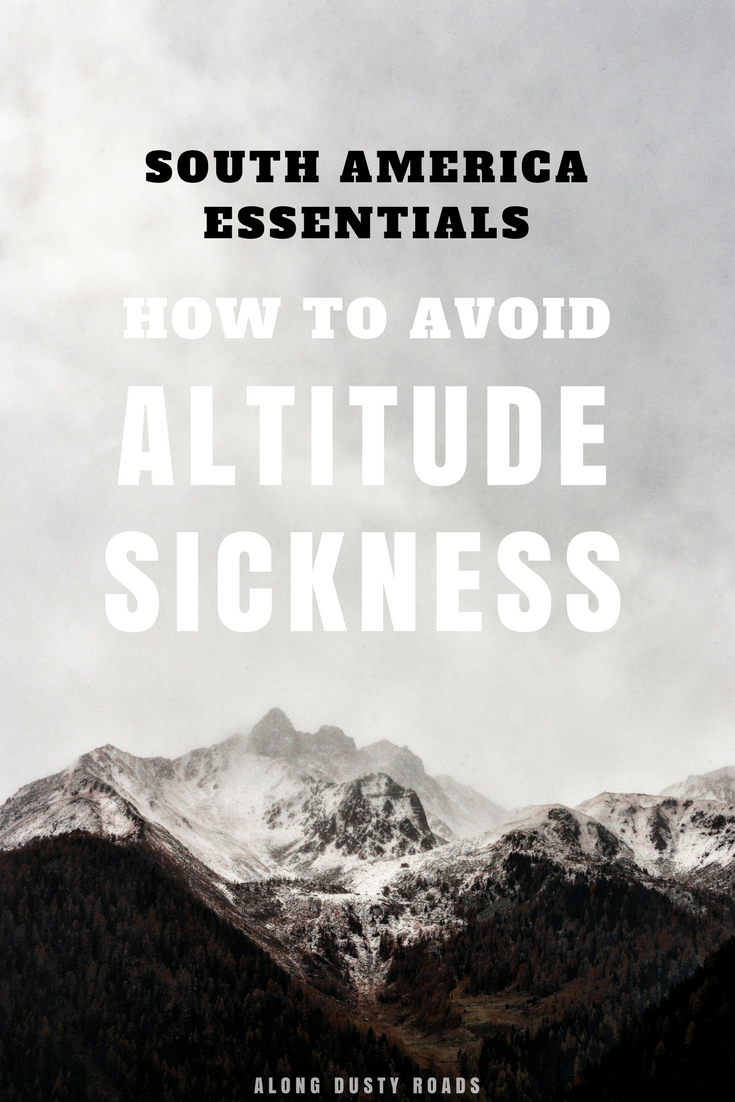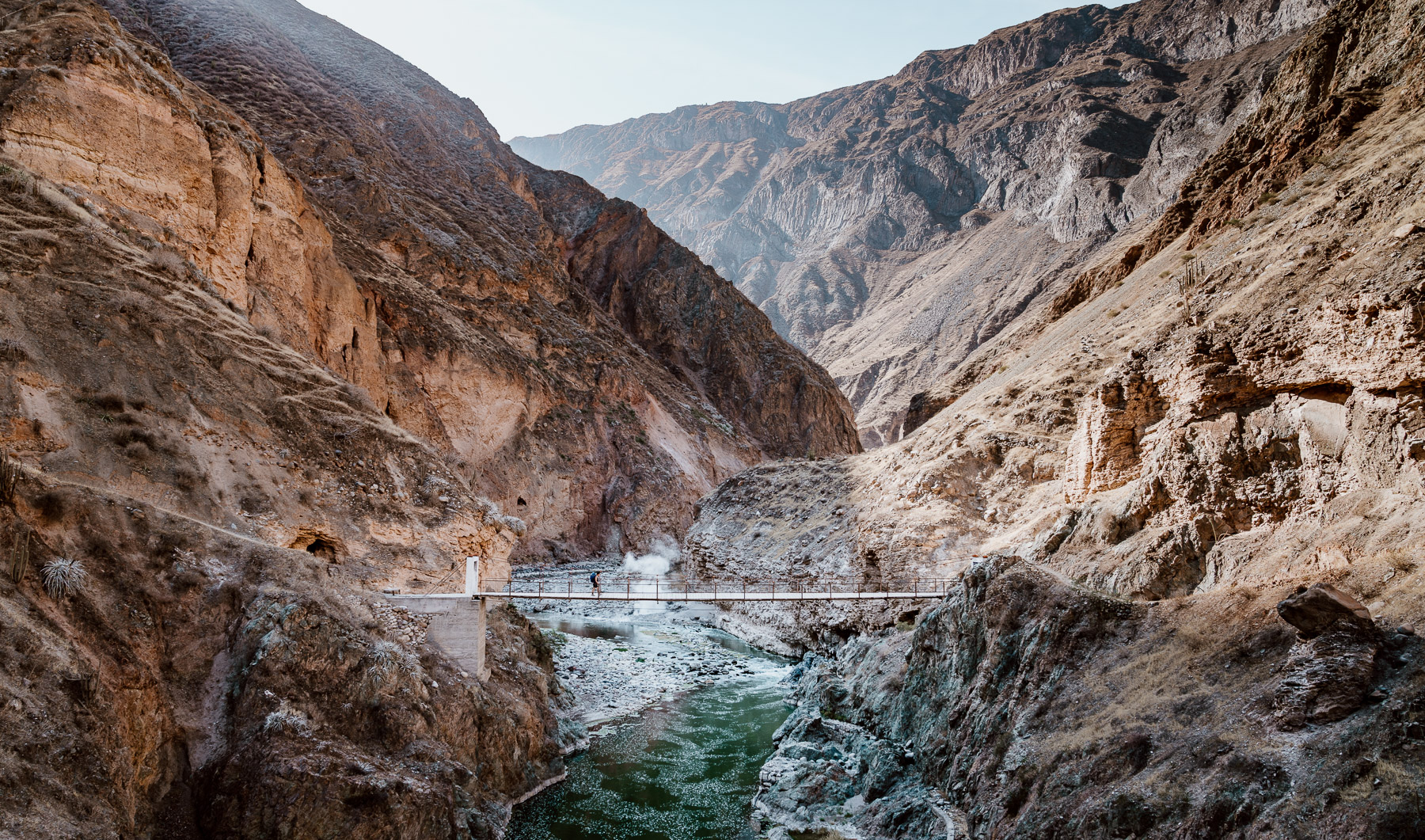Coming from Britain, where our tallest mountain is only 1,344 metres (4,409 feet), altitude sickness isn't something we encounter very much in our day-to-day lives. However, having climbed and hiked a significant number of volcanoes and mountains on in Latin America, not to mention staying in cities twice as high as our beloved Ben Nevis, we've become pretty used to altitude and the unpleasant effects it can have.
If you're planning a trip to Latin America or South America, and intend on ticking off a number of bucket list items like the Inca Trail in Peru, completing the Ecuador’s Quilotoa Loop, or taking your photo at Rainbow Mountain, then you too are going to spend more than a couple of days above 2,500m. Trust us when we tell you that understanding altitude sickness in South America and planning ahead to increase your chances of avoiding it during your own adventure could be the difference-maker between making a visit to Peru or Bolivia the best or worst trip of your life.
In this guide, we’ve explained what altitude sickness is, why it’s such a big issue for travellers in South America, as well as tips on how to increase your chances of avoiding altitude sickness entirely and to prepare yourself so you know what to do should you become unwell whilst travelling.
What is Altitude Sickness?
Not felt until you pass 2,500m (8,202 ft), altitude sickness is essentially your body telling you it's not getting enough oxygen.
The higher you go in the world, the thinner the air gets. This means that, as the metres increase, the less oxygen there is for your body to use; altitude sickness is your body's way of letting you know that it hasn't got as much oxygen as it normally requires.
What a lot of people don't realise, is that you don't have to be climbing a mountain to be affected by the altitude. So many towns in South America (i.e. Quito, Cusco, Bogota, La Paz) are already so high, that merely arriving in them from sea level could cause you to feel unwell.
The symptoms can range from a throbbing headache, loss of appetite and nausea (you may even vomit) to a feeling of tiredness, altered sleep patterns and dizziness. Those that have experienced it frequently compare it to a bad hangover (and we know all about those).
In most instances, this is as bad as it should get. However, in severe but very small number of cases, you could also suffer from significant shortness of breath, confusion, drowsiness, coma and even death.
Who gets it?
Unfortunately, there is absolutely no way to predict who will suffer from altitude sickness - you could be the healthiest guy in the world or a chain-smoker with a beer gut, the sickness does not discriminate.
Additionally, as the symptoms have a lot to do with how quickly your body goes from one altitude to another, just because you didn't suffer it on your last hike where you were properly acclimatised, doesn't mean you won't feel unwell on your arrival to La Paz on a flight from the beach.
Can you prevent Altitude sickness?
The vast majority of us live much closer to sea level than we realise, and if that's the case then you need at least a few days to acclimatise to any significant altitude shift. Essentially, your body needs to get used to functioning properly on less oxygen and that process simply takes time.
Yeah, you may have just flown into Cusco for a two week trip and want to get out hiking straight away, but this is absolutely the worst thing you can do and a sure fire way to increase your chances of becoming unwell. We personally know people who have had to cut their trips short because of this attitude - and can you imagine a worse way to start your South American adventure?
So, you HAVE to give yourself a couple of days whenever you go from sea level to altitude before undertaking any serious activity. If you’re on a shorter trip, then you absolutely have to factor this in when you’re planning your route; for example, we took two days to slowly explore the pretty city of Arequipa (which is also at altitude) so that we would be well acclimatised before taking on the multiday Colca Canyon Trek (which, as you should be able to guess by now, also takes place at high altitude!).
If not, you may find yourself out of breath just climbing the stairs to your room or tempting a day sight-seeing - or find yourself really struggling on a hike in the middle of nowhere. The girlfriend of a guy we met in Huaraz - the hiking capital of Peru - was actually in hospital with a severe case of altitude sickness and she had had to leave her Santa Cruz trek several days early.
Secondly, and as boring as it sounds, avoid the booze and cigarettes and drink plenty of water whilst you're at altitude and adjusting to it.
How do you treat it?
Should you experience the milder symptoms (nausea, headache, fatigue), the important thing is to recognise that you may be suffering from altitude sickness and for the time being not ascend any higher - if your body is already struggling, going any higher is only going to make you feel more unwell.
If the symptoms occur whilst you are simply in a city at altitude, you have little option but to rest and take as long as necessary for your body to acclimatise. Refrain from putting any extra stress on your body in the meantime and stay hydrated. It is very unlikely that you would become desperately unwell in this situation, but do seek medical assistance should you become concerned.
Should you experience the tell-tale signs whilst you are out trekking at high altitude, you must stop and only continue when you feel well again. If you begin to get worse, you MUST descend to a lower altitude and, if the symptoms do not abate, consider ending the trek.
Note that, if you plan on hiking at altitude in South America, it’s critical that you have the correct travel insurance. Most policies exclude activities above 2,500 metres, and so you would actually be uncovered in the event that you became unwell, suffered injury, or required rescue on several of the continent’s most popular hikes. Thankfully, both True Traveller and World Nomads offer travel insurance which can include coverage for high altitude trekking and various other adventure activities on the road.
In Peru, Ecuador and Bolivia, the local people chew coca leaves to ward off the effects of altitude but we found the coca sweets and coca tea more pleasant. In fact, when we were at around 5,000m at Cotopaxi, Ecuador, and I began to feel unwell, coca tea is what the guide gave me - I did begin to feel better, but that may have been because we descended shortly after. On any hike in these countries, you will not struggle to find coca tea!
Fortunately, the vast majority of people will only experience the milder symptoms of altitude sickness, however, it is hugely important to remember that it CAN kill at worst, or ruin your adventure at best. If you, or a travelling companion begin to experience shortness of breath, start acting unusually or appear more drowsy you MUST descend and seek medical advice.
The essentials things to know about altitude sickness in South America
Altitude sickness can strike anywhere above 2,500m - even if you're not up a mountain!
So many popular cities and hikes in South America are at altitude.
Most common symptoms are a headache, nausea and tiredness.
The best way to prevent it? Give yourself the time to acclimatise and ascend gradually!
If the symptoms do not improve, or get worse, you need to descend immediately.
Ensure that your travel insurance covers you for hikes at high altitude (read more tips for buying travel insurance here)
Further information on South America Altitude Sickness
There is an excellent website designed and contributed to by a number of doctors with a special interest in mountain and expedition medicine and the symptoms and treatment of altitude sickness. For anybody with more than a passing interest in these topics or for those planning on undertaking multiday hikes at significant altitude, I would strongly recommend visiting their website: www.altitude.org
Read Next | 12 Essential Hiking Tips for Peru
like it? pin it!
Disclaimer: Whilst I am a registered medical practitioner in the UK, I am not a mountain medicine or travel health expert. This article is not designed to and does not provide medical advice, professional diagnosis, opinion, treatment or services to you or to any other individual. Through this article, alongdustyroads.com provides general information for educational purposes only. The information provided in this article, or through linkages to other sites, is not a substitute for medical or professional care, and you should not use the information in place of a visit, call consultation or the advice of your doctor/travel nurse or other healthcare provider. alongdustyroads.com is not liable or responsible for any advice, course of treatment, diagnosis or any other information, services or product you obtain through this article.






















